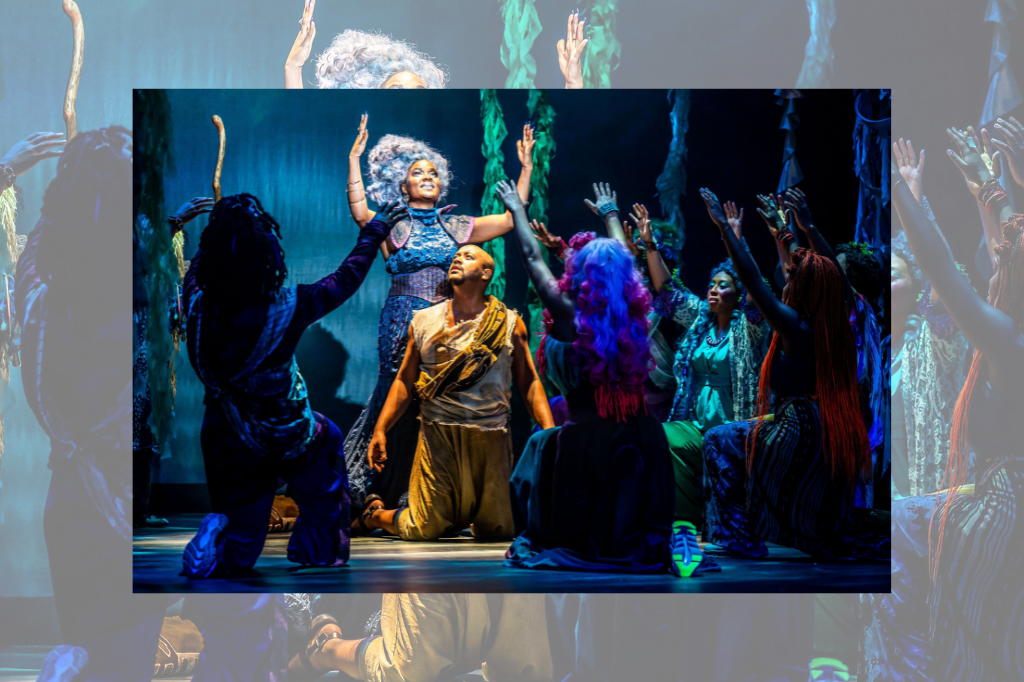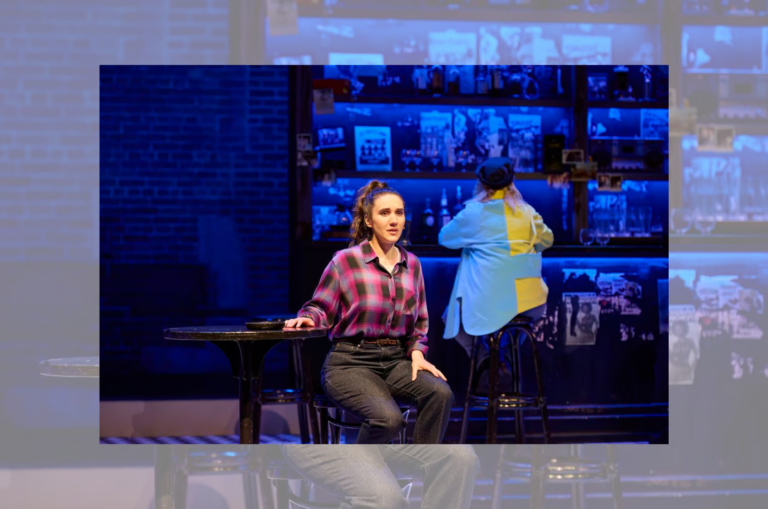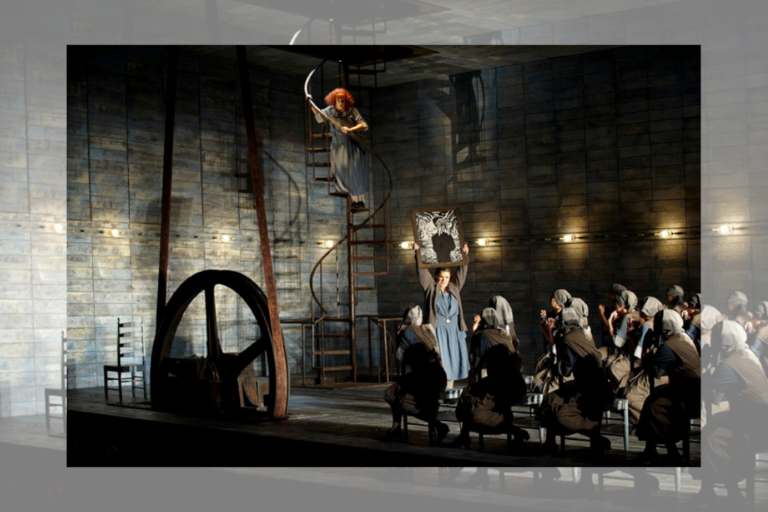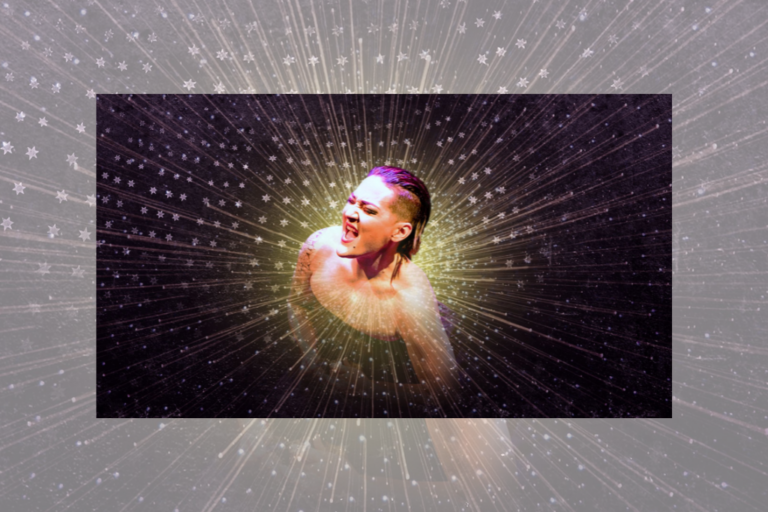REVIEW: Of the Sea at Obsidian Theatre/Tapestry Opera/TO Live
Tapestry Opera and Obsidian Theatre’s co-production of Of The Sea, directed by Philip Akin, is a story-driven opera that tells a heart-shattering tale about a father’s love and resilience. This world premiere, composed by Ian Cusson with libretto by Kanika Ambrose, offers a unique perspective on the devastating Middle Passage through powerful performances by an all Black cast. The Middle Passage was a time during the 1500-1800s when millions of enslaved African people were traded for European goods and transported by boat through the Atlantic Ocean to the Americas. This performance leaves you with hope for the future of Canadian opera, and is bound to pull you into the music of the sea life.
Of The Sea is, at its core, a story about how much a parent would sacrifice to save their child’s life.The action starts with Maduka (Jorell Williams) and his infant daughter Binyelum (later played by Ruthie Nkut) as they are thrown overboard from a slave ship and sink to the bottom of the Atlantic Ocean. The baby is represented on stage as wrapped cloth, fastened to Maduka with a crossbody sling. When they awake, they find themselves surrounded by an eccentric ensemble of sea people who inhabit the ocean floor. Refusing to conform to his new life under the water, Maduka is determined to resurface for the sake of his daughter’s life — but is soon faced with the realities of being forgotten beneath the water.
The dramatic music in Of The Sea, composed by Cusson and directed by Jennifer Tung, picks up more traction as the piece goes on. The music feels almost ambient and relaxed at lighter times, then transitions to a full polyphonic storm as the sea rages. Williams’ outstanding vocal performance of Maduka begins demure, frightened by his new, sea-bound life, then evolves into fiery, driven arias with strong tessitura when his desire to escape becomes obsessive.
The slow dramatic crescendo of the music meshes well with skillfully written text by Ambrose. The text pays homage to those who didn’t make it through the Middle Passage, who might have been forgotten in the waters. Ambrose’s carefully chosen text gives story and livelihood to their existence, and imagines how their bodies changed the sea forever.
There is a particularly compelling visual moment between the two queens of the underwater African kingdoms. Difza (Suzanne Taffot), queen of the Kingdom of Ireti, sings a duet with with Serwa (Chantale Nurse), queen of the Enweghi people in another part of the sea, about the loss and grief of having been sunken to the sea floor from a slave ship and torn from their children. In this moment, Maduka, full of hope, holds his infant in his arms centre stage, creating a powerful trio: the two queens who have faced systemic loss and Maduka who holds on tightly to a brighter future.
The electric costumes and tangled seaweed set by Rachel Forbes are brilliant. The people of the sea — that is, the ensemble — are dressed in neon, African-Caribbean inspired, street-style clothes with influences of aquatic life. Some costumes are lightweight and flowing, giving the illusion of moving through water, while others are tighter in fit and have more shape to them, with subtle fin-like silhouettes.
The costumes are highlighted by Steve Lucas’ lighting design. The lights are often in motion through the seaweed, giving the effect of sunlight peeking through the waves and lighting the neon and shiny parts of the costumes. But it’s Forbes’ deliberate choice to use bright colours and streetwear styles that furthers the story of resilience and adds humanness to the mythological ensemble. Despite being discarded or thrown overboard and treated in unimaginably inhumane ways, the people of the sea are dressed in almost familiar ways to how they might have lived if they were free above the water. The costuming feels like a way of resisting the erasure of slaves and generations of people who never made it to land.
The movement on stage by movement director Hollywood Jade, followed suit to the rest of the performance in its strong choices. For the majority of the production, the ensemble moves slowly, lurking among the seaweed. At times, this keeps the focus on Maduka and his agony, as he is often centre stage. The stillness of the ensemble when they sing together highlights the power of solidarity, making the ensemble of eight feel larger and very much present.
So much of opera in Canada is still dominated by Eurocentric stories and folklore that have remained virtually untouched for centuries in their casting and design. Of The Sea is more than just refreshing — the production is critical to creating change in the Canadian operatic world. Of The Sea demonstrates the value of Black perspectives and experiences in classical music. This production is predominantly sung in English, with English subtitles making it feel approachable to both opera experts who relish in thick drama and storytelling, and opera-curious people who want to learn more about the genre. On top of this, this production depicts powerful Black characters and female-identifying characters who are written as leaders and decision-makers. Of the Sea is a tremendous step forward for Canadian opera and an example of the power that the operatic form can wield to tell under-represented stories.
Of the Sea runs at the Bluma Appel Theatre though April 1. Tickets are available here.












Comments